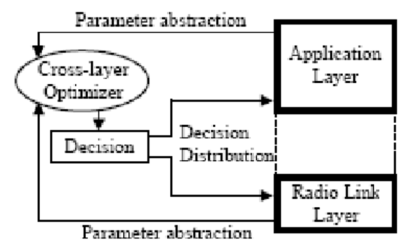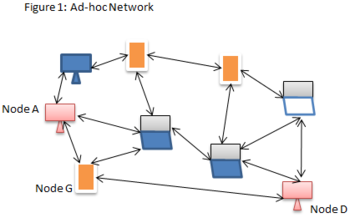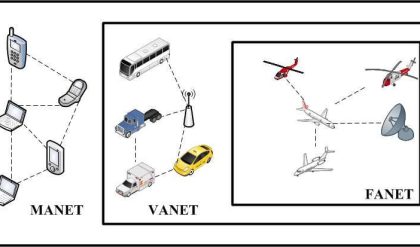CHARACTERISTICS
MANET
It is an infrastructureless IP based network of mobile and wireless machine nodes connected with radio. In operation, the nodes of a MANET do not have a centralized administration mechanism. It is known for its routeable network properties where each node act as a ―router‖ to forward the traffic to other specified node in the network.

The characteristics are:
· In MANET, each node act as both host and router. That is it is autonomous in behaviour.
· Multi-hop radio relaying- When a source node and destination node for a message is out of the radio range, the MANETs are capable of multi-hop routing.
· Distributed nature of operation for security, routing and host configuration. A centralized firewall is absent here.
· The nodes can join or leave the network anytime, making the network topology dynamic in nature.
· Mobile nodes are characterized with less memory, power and light weight features.
· The reliability, efficiency, stability and capacity of wireless links are often inferior when compared with wired links. This shows the fluctuating link bandwidth of wireless links.
· Mobile and spontaneous behaviour which demands minimum human intervention to configure the network.
· All nodes have identical features with similar responsibilities and capabilities and hence it forms a completely symmetric environment.
· High user density and large level of user mobility.
· Nodal connectivity is intermittent.
· Distributed operation: There is no background network for the central control of the network operations, the control of the network is distributed among the nodes. The nodes involved in a MANET should cooperate with each other and communicate among themselves and each node acts as a relay as needed, to implement specific functions such as routing and security.
· Multi hop routing: When a node tries to send information to other nodes which is out of its communication range, the packet should be forwarded via one or more intermediate nodes.
· Autonomous terminal: In MANET, each mobile node is an independent node, which could function as both a host and a router.
· Dynamic topology: Nodes are free to move arbitrarily with different speeds; thus, the network topology may change randomly and at unpredictable time. The nodes in the MANET dynamically establish routing among themselves as they travel around, establishing their own network.
· Light-weight terminals: In maximum cases, the nodes at MANET are mobile with less CPU capability, low power storage and small memory size.
· Shared Physical Medium: The wireless communication medium is accessible to any entity with the appropriate equipment and adequate resources. Accordingly, access to the channel cannot be restricted.





